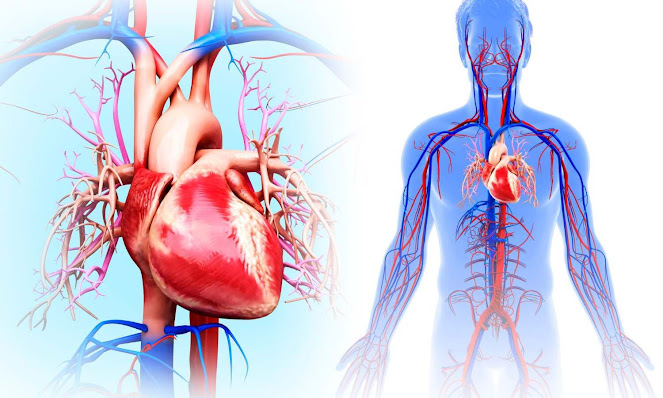Advancing Treatment Frontiers: New Horizons in Managing Transthyretin Amyloid Cardiomyopathy
 |
| Transthyretin Amyloid Cardiomyopathy Treatment |
Transthyretin amyloid cardiomyopathy (ATTR-CM) is a rare but serious disease caused by the buildup of abnormal deposits of amyloid protein in the heart muscle. These deposits weaken the heart muscle and affect its ability to pump blood efficiently. Until recently, treatment options for ATTR-CM have been limited. However, new breakthrough therapies are showing promising results in improving heart function and survival for patients with this condition. This article discusses the latest treatment advances and management strategies for ATTR-CM.
What is ATTR-CM?
ATTR-CM is caused by mutations or abnormalities in the transthyretin (TTR) protein. TTR is normally made in the liver and transports thyroxine and vitamin A in the blood. However, in some people, the TTR protein folds abnormally and forms amyloid fibrils that accumulate in tissues and organs such as the heart, nervous system, and gastrointestinal tract. Over time, these amyloid deposits damage the heart muscle and impair its ability to pump blood. The earliest symptoms of ATTR-CM include fatigue, shortness of breath, and leg swelling. As the disease progresses, it can lead to heart failure, arrhythmias, and death.
Medical Management
While new disease-modifying Transthyretin Amyloid Cardiomyopathy Treatment ATTR-CM treatments have emerged, medical management remains important. Patients are prescribed medications to control heart failure symptoms and arrhythmias. Diuretics help reduce fluid retention and edema. Beta-blockers and angiotensin receptor blockers (ARBs) strengthen cardiac function. Angiotensin-converting enzyme (ACE) inhibitors lower blood pressure and protect the kidneys. Antiarrhythmic drugs may be used for abnormal heart rhythms. Eating a healthy diet, exercising regularly, avoiding alcohol, and quitting smoking also aid medical management. Early treatment improves outcomes, so anyone experiencing ATTR-CM symptoms should see a doctor right away.
Stem Cell Therapy
Stem cell therapy holds promise as a novel treatment approach for ATTR-CM. In this experimental therapy, stem cells are harvested from a patient's own bone marrow or blood and injected into the heart. The stem cells have the potential to repair damaged cardiac tissue and aid regeneration by decreasing amyloid deposits and fibrosis. Early-phase clinical trials are still investigating the safety, dosage levels, and efficacy of stem cell therapy for ATTR-CM. Preliminary results suggest it may help improve cardiac function and quality of life over the short term for some patients. Larger, long-term studies are still needed to confirm stem cell therapy's ability to slow ATTR-CM progression.
TTR Stabilizers
TTR stabilizers are oral medications that bind to and stabilize the TTR protein tetramer, preventing amyloid fibril formation and deposition in tissues. The first TTR stabilizer approved for ATTR-CM treatment is tafamidis. In clinical trials, tafamidis stabilized cardiac parameters and reduced all-cause mortality compared to placebo after 30 months. Common side effects included peripheral edema and gastrointestinal issues. Other promising TTR stabilizers in clinical development include inotersen and pegviramide. TTR stabilizers are generally well-tolerated and help protect cardiac structure and function if started early, before extensive damage occurs. However, they may not eliminate existing amyloid deposits.
RNAi Therapies
RNA interference (RNAi) therapies utilize short interfering RNA molecules to block production of abnormal proteins like TTR at the genetic level. Specifically designed to treat ATTR, patisiran and inotersen are two RNAi drugs approved for hereditary ATTR amyloidosis with polyneuropathy. Preliminary evidence suggests they may also benefit cardiac amyloid patients. In the ongoing ATTR-ACT study, patisiran halted progression and decreased levels of amyloid deposits in the heart tissue of ATTR-CM patients within 18 months. Symptoms were improved and fewer cardiovascular-related hospitalizations occurred in the patisiran group versus placebo. RNAi therapies represent a personalized approach that could halt ATTR-CM progression if given soon after diagnosis. Larger trials are still assessing long-term efficacy and safety in treating cardiomyopathy specifically.
Heart Transplantation
A heart transplant remains the only cure for end-stage cardiac amyloidosis, though finding a suitable donor heart can be difficult. Transplant eligibility is determined based on factors like age, overall health status, frailty level, medical comorbidities, and how progressed the disease is. The amyloid may also reoccur in the donor heart if the underlying protein abnormality is not addressed before transplant. Post-transplant survival rates for amyloid patients have historically been lower than other causes of heart failure requiring transplant. However, new ATTR-CM treatments may improve outcomes by slowing disease progression pre- and post-transplant. Multidisciplinary coordinated care is paramount for transplant candidates and recipients with amyloidosis. With proper management, selected ATTR-CM patients can have their quality of life restored through successful heart transplantation.
The prognosis for ATTR-CM has evolved greatly with recent drug approvals. Where options were once limited to symptom management alone, multiple novel treatments targeting the underlying cause are now available or in development. If diagnosed early, ATTR-CM is potentially treatable or even preventable through options like TTR stabilizers, RNAi, and stem cell or heart transplant. With the right combination of medical, device and surgical options utilized based on disease severity and individual factors, a normal lifespan may be possible for many ATTR-CM patients. Optimizing treatment is crucial to halt progression, minimize complications, and improve symptoms and survival long-term. Though rare, increasing awareness of ATTR-CM aids diagnosis and access to life-extending therapies. Continued research advances promise even more breakthroughs ahead.
Get more insights on Transthyretin Amyloid Cardiomyopathy Treatment


%20Treatment%20(1).jpg)
Comments
Post a Comment